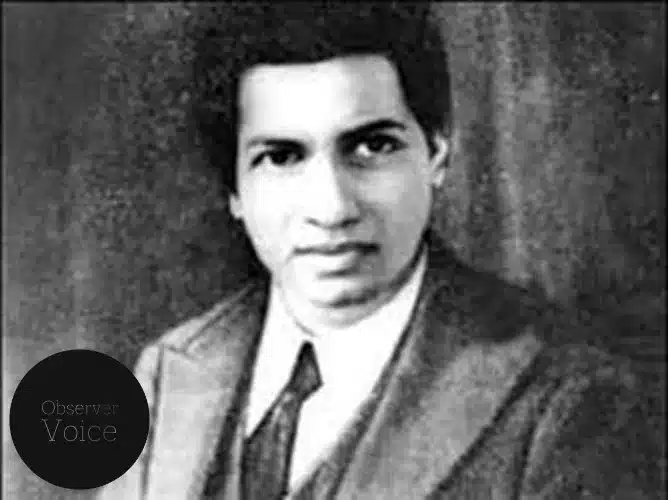Infinite Genius: Celebrating the Legacy of Srinivasa Ramanujan

Srinivasa Ramanujan (22 December 1887-26 April 1920) was an Indian mathematician. Who contributed to the analytical theory of numbers and worked on elliptic functions, continued fractions, and infinite series.
Life and Career
Srinivasa Ramanujan was born on 22 December 1887, in Tamil Nadu, India. His father K. Srinivasa Iyengar worked as an accountant for a clothing company. His mother Komalatammal was a singer at a local temple. He studied at the Kumbakonam Town High School, and he was a top student in his district.
He began working on geometry and arithmetic sums on his own in 1900. He had his own method of solving quadratic equations.
In 1903, his main source of inspiration and expertise came from a book written by George Shoobridge Carr. It presented a ton of mathematical results. He started developing his own thermos.
He graduated from Town Higher Secondary School in 1904. He received the K. Ranganatha Rao prize for mathematics. The Government Arts College awarded him a scholarship, but he spent most of his time focused on mathematics so he couldn’t concentrate on anything else.
Ramanujan had already started doing deep research by 1904. Based on the series, he calculated Euler’s constant to 15 decimals. Despite being entirely his own discovery, he started studying Bernoulli numbers.
In 1905, he attended Pachaiyappa’s College but was again unsuccessful in his non-mathematical courses.
He started looking for a permanent job, which led to him interviewing a government official. Getting a job as a clerk at the Madras Port Trust improved his financial situation in March 1912.
The first papers he wrote were published in the Journal of the Indian Mathematical Society. Slowly, he was getting recognized for his work, and in 1913, he began a correspondence with Godfrey Hardy, which led to a special scholarship from Madras University and a grant from Trinity College. A few days later, he went to England to work with Hardy on some research. Littlewood and Hardy started working with him right away.
Littlewood and Hardy started looking through Ramanujan’s notebooks. Over the years 1903 – 1914, he devised thousands of identities, equations, and theorems for himself in the notebooks he brought from India.
Ramanujan became the first Indian mathematician to become a Royal Society Fellow in 1918. There are almost 4000 proofs, identities, conjectures, and equations he figured out in his short lifetime.
Legacy of Srinivasa Ramanujan
The number 1729 is known as the Hardy–Ramanujan number. The year after his death, Nature listed Ramanujan among other distinguished scientists and mathematicians on a “Calendar of Scientific Pioneers” who had achieved eminence. Ramanujan’s home state of Tamil Nadu celebrates 22 December (Ramanujan’s birthday) as ‘State IT Day’. Stamps picturing Ramanujan were issued by the government of India in 1962, 2011, 2012, and 2016.
In 2011, on the 125th anniversary of his birth, the Indian government declared that 22 December will be celebrated every year as National Mathematics Day. Then Indian Prime Minister Manmohan Singh also declared that 2012 would be celebrated as National Mathematics Year.
on 22 December 2012, google doodle celebrated Srinivasa Ramanujan’s 125th Birthday.
Death and Immortality
Ramanujan had numerous health problems throughout his life. His health worsened in England; possibly he was also less resilient due to the difficulty of keeping to the strict dietary requirements of his religion there and because of wartime rationing in 1914–18. He was diagnosed with tuberculosis and a severe vitamin deficiency and confined to a sanatorium. He died on 26 April 1920 at the age of 32, in Madras, India.
Read More; 21 December in India and World History.
Observer Voice is the one stop site for National, International news, Sports, Editor’s Choice, Art/culture contents, Quotes and much more. We also cover historical contents. Historical contents includes World History, Indian History, and what happened today. The website also covers Entertainment across the India and World.
Follow Us on Twitter, Instagram, Facebook, & LinkedIn

